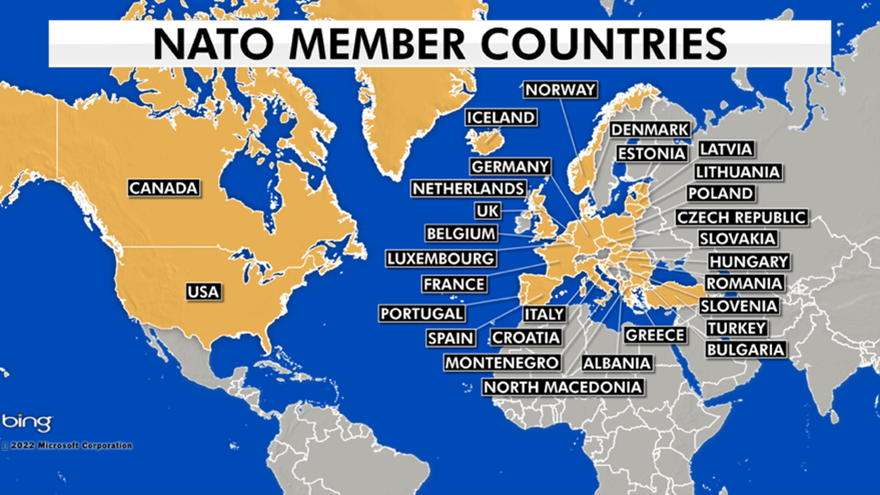Wednesday, 25th May 2022
Indo-Pacific Economic Framework (IPEF)
In News
India agrees to join new Indo-Pacific bloc launched by USA
About the News
- Leaders of Australia, Japan, India and the United States — also known as the Quadrilateral Security Dialogue grouping or QUAD has recently meet in Tokyo for their second in-person summit.
- At the meeting, 12 countries including India have agreed to join the new Indo-Pacific Economic Framework launched by the US.
- The new framework is seen as Washington’s answer to the Trans Pacific Partnership (TTP) and its successor agreement, the Comprehensive and Progressive Agreement for TTP (CPTPP), as well as the Regional Comprehensive Economic Partnership (RCEP).
- Previously, the US had pulled out from the TTP due to enormous domestic backlash against the low/no tariff agreement in it besides also not joining the China-led 15-country RCEP.
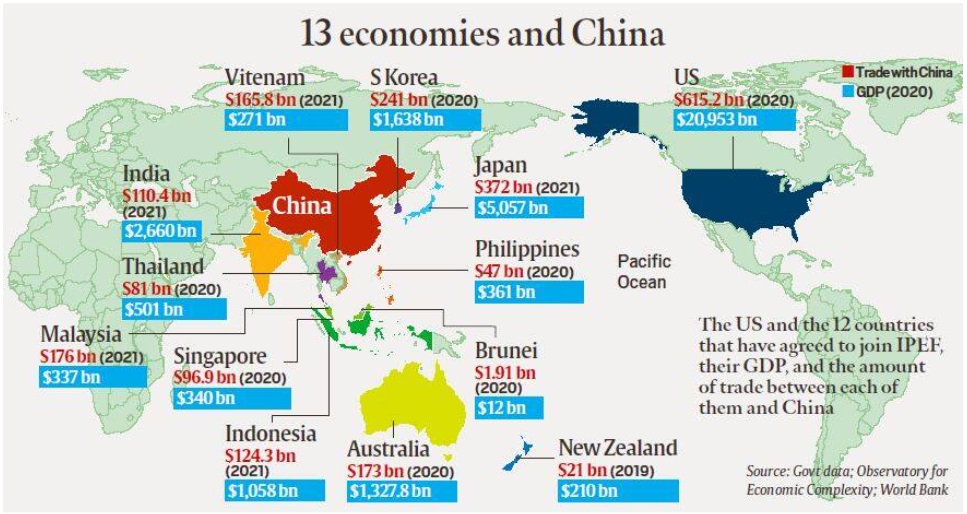
What is IPEF?
- About: IPEF is a preliminary trade agreement framework led by a group of countries which will be based on flexibility along four main “pillars” viz.
- Trade: It will include digital economy and emerging technology, labour commitments, the environment, trade facilitation, transparency and good regulatory practices, and corporate accountability, standards on cross-border data flows and data localisations.
- Supply chain: A resiliency to develop “a first-of-its-kind supply chain agreement” that would anticipate and prevent disruptions.
- Clean energy and decarbonisation: It will include agreements on “high-ambition commitments” such as renewable energy targets, carbon removal purchasing commitments, energy efficiency standards, and new measures to combat methane emissions.
- Tax and anti-corruption, with commitments to enact and enforce effective tax, anti-money laundering, anti-bribery schemes in line with standard values.
- Membership: At present India along with other 11 countries which accounts for 40% of the world’s GDP viz. Australia, Brunei, Indonesia, Japan, the Republic of Korea (South Korea), Malaysia, New Zealand, the Philippines, Singapore, Thailand, and Vietnam have committed to the framework.
- Status: The 12 countries are yet to begin negotiations, which is the next step in the process.
Why IPEF is important?
- Reclaiming economic leadership: The framework is seen as USA’s realisation of its near-onlooker status to the trade arrangements in the region, with China’s stamp all over the Indo-Pacific region.
- Setting new norms: IPEF would help in setting the rules of the road for the digital economy, ensuring secure and resilient supply chains, helping make the kinds of major investments necessary in clean energy infrastructure and the clean energy transitions.
- Alternative to China: It not only marks an important turning point in restoring US economic leadership in the region but also presents Indo-Pacific countries an alternative to China’s approach to these critical issues.
Sources:
Draft rules for e-waste
In News
Environment Ministry released draft rules for e-waste specifying recycling targets, ‘trading’ in certificates, open to public until August.
What is new in the rules?
- Consumer goods companies and makers of electronics goods must ensure atleast 60% of their electronic waste is collected and recycled by 2023 with targets to increase them to 70% and 80% in 2024 and 2025 respectively.
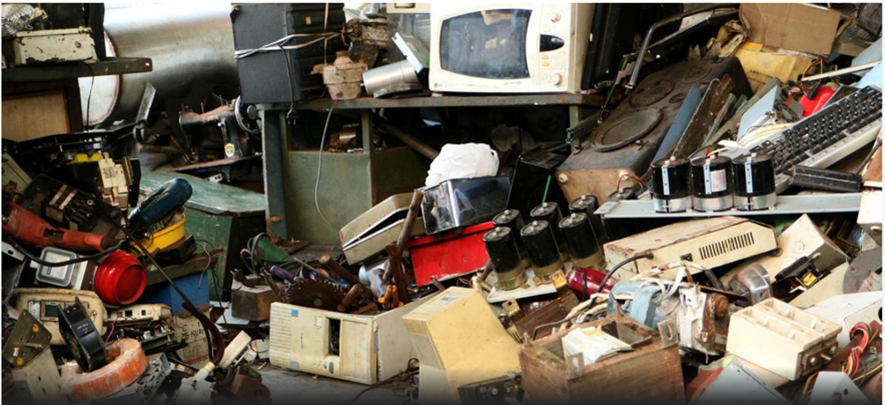
- The rules also bring into effect a system of trading in certificates, akin to carbon credits, that will allow companies to temporarily shore up shortfalls.
- The earlier rules stressed on collection targets. Now emphasis is on the EPR, recycling and trading. This follows from the government’s objective to promote a circular economy.
- Companies will have to register on an online portal and specify their annual production and e-waste collection targets.
- The chief entity that will coordinate the trade of EPR certificates and monitor if companies are meeting their targets is the Central Pollution Control Board (CPCB).
- A wide range of electronic goods, including laptops, landline and mobile phones, cameras, recorders, music systems, microwaves, refrigerators and medical equipment have been specified in the notification.
- The EPR also requires producers to set up e-waste exchange facilities to facilitate collection and recycling and assign specific responsibility to bulk consumers of electronic products for safe disposal.
- A Steering Committee (SC) to be headed by the Chairman of the CPCB will oversee the overall implementation of these regulations. Companies that don’t meet their annual targets will have to pay a fine or an ‘environmental compensation’.

About India’s e-waste rules
- India is unique among South Asian countries, in that it has a formal set of rules for electronic waste management,
- The rules were first announced in 2016 and amended it in 2018.
- In March 2020, the government said it more than doubled the electronic waste (e-waste) it recycled in 2018-19 over 2017-18. This translated to a 10% recycling rate in 2017-18 rising to a little over 20% in 2018-19.
- Most of India’s e-waste is recycled by the informal sector and under hazardous conditions and a thrust of the e-waste rules is to have more this waste be handled by the formal sector.
- The e-waste produced in India as per the data provided by the government is lower than estimates by international agencies.
- According to the Global E-Waste Monitor 2017, India generates about 2 million tonnes (MT) of e-waste annually and ranks fifth among e-waste producing countries, after the U.S., China, Japan and Germany.
Source:
Article 142 of the Constitution
In News
In ordering the release of Rajiv Gandhi assassination case convict AG Perarivalan recently, a Supreme Court Bench has invoked the extraordinary power conferred on the court under Article 142 of the Constitution.
Understanding Article 142 of the Constitution
- Subsection 1 of Article 142 (“Enforcement of decrees and orders of Supreme Court and orders as to discovery, etc.”) says that:
- The Supreme Court in the exercise of its jurisdiction may pass such decree or make such order as is necessary for doing complete justice in any cause or matter pending before it.
- Any decree so passed or order so made shall be enforceable throughout the territory of India in such manner as may be prescribed by or under any law made by Parliament and, until provision in that behalf is so made, in such manner as the President may by order prescribe.
- Therefore, this provision of the Constitution gives the Supreme Court wide powers to do “complete justice” in a case.
- Article 142, which started out as draft article 118, was adopted by the Constituent Assembly on May 27, 1949.
- Scope of Article 142: The scope and extent of Article 142 has been provided by the court in some important cases in such as ‘Prem Chand Garg v. Excise Commissioner, U.P., Allahabad’ (1962); ‘A.R. Antulay v. R.S. Nayak & Anr’ (1988); ‘Union Carbide Corporation v. Union of India’ (1991); and ‘Supreme Court Bar Association v. Union of India’ (1998).
- Article 142 in Ayodhya Verdict: In its 2019 judgment in the Ayodhya case, the court used the extraordinary powers under this provision to grant 5 acres of land in Ayodhya situated outside the disputed area to Muslim parties, saying, in an implicit reference to the demolition of the Babri Masjid in 1992, that it was invoking Article 142 “to ensure that a wrong committed must be remedied”.
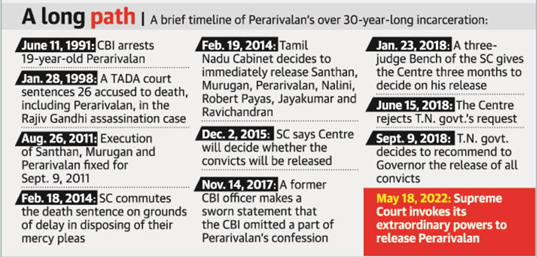
Source:
- Explained: The content and scope of Article 142, invoked by Supreme Court to release Perarivalan
- What is Article 142 of Constitution That SC Invoked to Release Perarivalan in Rajiv Gandhi Assassination Case? | Explained
Image source:
Erik Weihenmayer
On May 25, 2001, Erik Weihenmayer became the first blind person to reach the summit of Mt. Everest. In 2008 he climbed Carstensz Pyramid on the island of Papua New Guinea, completing the Seven Summits, the highest point on every continent.

He has authored multiple books, including his memoir, Touch the Top of the World. Even as retinoschisis began to rob him of his vision by the age of 14, Erik resisted the idea that blindness would sweep him to the sidelines of life. To advance this idea, Erik co-founded not merely an organization, but rather a movement called No Barriers. The mission is to help people with challenges.
Source:
Tea Sector in India
In News
The Government is in the process of introducing 'The draft Tea (Promotion and Development) Bill, 2022' to replace the 68-year-old Tea Act, 1953.
About the News
- The current move of the Government is an attempt to try and drag the ailing sector from the nineteenth to the twenty-first century.
- A glimpse of the outdated provision are as follows:
- At present, anybody wishing to start growing tea needs the government’s permission to plant tea
- Manufacturing tea requires a separate licence.
- Exports are controlled and there are quotas and allotments.
- Thus, although growing tea is technically agriculture, which is a state subject, the Central Tea Board Act, passed shortly after independence in 1949, resulted in tight reins on the sector by the Central Government.
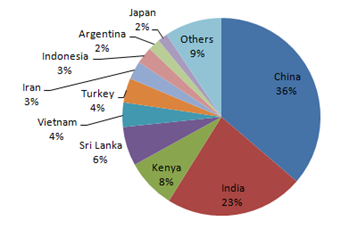
About Tea Sector in India
- India is the second-largest producer of tea globally, after China.
- However, Indian tea is one of the finest in the world due to strong geographical indications, heavy investment in tea processing units, continuous innovation, augmented product mix, and strategic market expansion.
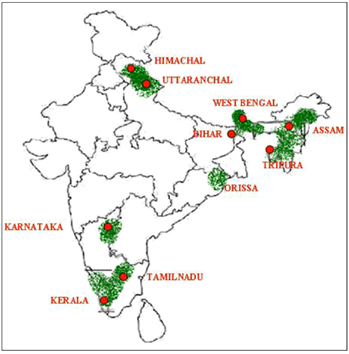
- India is also among the top tea-consuming countries in the world with 80% of the tea produced in the country being consumed by the domestic population.
- The northern part of India is the biggest producer at about 77% of the total country’s annual tea production; with the majority of the production coming from Assam followed by West Bengal.
- The southern part of India produces about 18% of the country’s total production with the major producing states being Tamil Nadu, Kerala, and Karnataka.
- India is among the top five tea exporters in the world contributing about 10% of the total exports.
- Indian Assam, Darjeeling and Nilgiri tea are considered one of the finest in the world.
- Majority of the tea exported out of India is black tea which makes up about 96% of the total exports.
How is Tea production regulated in India?
- The Tea Board of India was set up in 1953 for the development of tea industry in India.
- Being the regulatory body, the Board exerts control over the producers, manufacturers, exporters, tea brokers, auction organizers and warehouse keepers through various control orders notified under Tea Act.
- The responsibilities of the board are increasing production and productivity, improving the quality of tea, market promotion, and welfare measures for plantation workers and supporting Research and Development.
Government Initiatives w.r.t. Tea Sector
- A Special Tea Term Loan (STTL) for the tea sector was announced by the Indian government in 2004, to provide for restructuring of Working Capital
- Darjeeling Tea also has its Geographical Indication (GI) registered in India in 2004, that provides for its recognition.
- To help Indian exporters for marketing teas of Indian origin in overseas markets on a sustained basis, the Tea Board of India started a scheme: Promotion for packaged Tea of Indian origin, during the 12th Five Year Period
- The scheme provides assistance in promotional campaigns - up to 25% of the cost reimbursement, display in International Departmental Stores, product literature and website development, and inspection charges reimbursement of up to 25% of the charges.
Issues/Challenges faced by the Tea Sector
- Declining Prices: Across the world, tea’s auction price has declined in the recent past. Also, no proper steps were taken to improvise the quality of tea being produced in India to raise the price margins
- Stagnant production: Production has been stagnant for years, while there has been a sharp fall in the quality of tea produced as well. This is due to chronic under-investment in plantations, which has led to a steady decline in plant and leaf quality.
- High cost of production: The wage component constitutes over 60% of the total cost of production. Wage costs have quadrupled over the past decade, according to a study (Tea Industry at the Crossroads) carried out by ASSOCHAM
- Escalating input costs of electricity, fuel, pesticides and agro-chemicals and irrigation, etc. make Indian tea - in international market.
- Climatic change and Seasonal effect: Rainfall, low or no rainfall in crop season, prolonged dry spell, sometime flood like situations, increasing temperature, etc. are major challenges in almost all tea gardens.
- Pest and disease: The practices of integrated pest management (IPM) are not followed in most of the gardens.
Sometimes, overdose of pesticides pose a risk of higher pesticide residues, as well as environmental contamination, disturbance of ecological balance.
-
- Also, there is poor monitoring over the pesticide dose and the interval between the spray and the plucking.
- Inadequate Government effort: Apart from the colonial era policy hangover, Labour unions, on the other hand, point out that the proposed draft Bill will only formalise the existing reality.
- It is alleged that lakhs of hectares have been planted without permission, and to the rise of stand-alone ‘bought tea’ factories, which source leaf from small growers, who escape the regulatory provisions of the Plantation Act and the Tea Act.
Way forward
- Improvement through Training: Farmers/Labourers should be made aware of the certifications and training being offered by certification bodies, to train them on farmers Code of Conduct and supply chain management guides
- Quality Enhancement: Only quality tea production paves the way to preserve and significantly increase the export prices. Moreover this also will increase the demand for Indian tea among international products in the global arena and thereby increasing the profit margins as well.
- Climate smart tea production: To counteract with the climate change, the industry has to react smartly by adopting Irrigation and drip irrigation, rainwater harvesting, drought and flood-resistant planting materials. Efforts should be done restore the environment by better resource management.
- Use of ICT: ICT tools are a quick medium to share information, market intelligence, government schemes, weather updates, latest development in world, etc
- Adequate technical support can be made available to the small and medium size producers by using ICT tools.
- Need for Organized Business: Indian tea industry is still unorganized and even though Government is controlling this industry with Tea Board, it’s not that effective as expected. Hence, the need of structural reforms.
Question: Discuss the challenges faced by the tea sector in India and ways to resolve them.
Source:
- Tea Industry and Exports in India
- The new law, the first step in ridding the tea sector of colonial, socialist past
- Tea Production in India: Challenges and Opportunities
- Tea Industry in India – Challenges Ahead
Image source:
Monkeypox virus
This is image of the draft genome sequence of the monkeypox virus. Researchers from the National Institute of Health Doutor Ricardo Jorge (INSA), Lisbon, Portugal have shared the draft genome sequence of the monkeypox virus that is rapidly spreading in many European countries.

Monkeypox is not endemic in Europe or the U.S. but is endemic in a few Central and West African countries. The virus is transmitted from one person to another by close contact with lesions, body fluids, respiratory droplets and contaminated materials.
Source:
Retinoblastoma
- Context: As part of the World Retinoblastoma Awareness Week, the Retinoblastoma Clinic has been conducting awareness lectures to spread awareness about the disease condition.
- It is the most common eyecancer in children which affects 1 in 18,000 children every year across the world.

- In India, more than 1500-2000 children are affected by the disease every year.
- It arises from the retina of the eye that is responsible for visual perception.
- It can occur in one or both eyes and may be hereditary or sporadic.
- The symptoms include: White Reflex in the eye (pupil that looks white or yellow instead of red when light hits it), Squinting (a crossed eye, looking either toward the nose or towards the ear) and Poor vision with or without White Reflex.
- It occurs when nerve cells in the retina develop genetic mutations that cause the cells to continue growing and multiplying when healthy cells would die.
- This accumulating mass of cells forms a tumour.
- The most common treatment is Chemotherapy that can be delivered intravenously or intra-arterial means.
- Laser therapy and Radiation therapy are also provided in certain cases.
Source:
- Retinoblastoma
- World Retinoblastoma Awareness Week: Doctor reveals symptoms, precautions and treatment
- Explained: What is retinoblastoma, the common eye cancer in children?
Image source:
eVTOLs
- Context: The Union Minister for Civil Aviation has recently stated that India will deploy electric vertical take-off and landing (eVTOL) aircraft to ensure urban air mobility.
- VTOL is a standard term to describe helicopters and tilt-rotor aircraft that land and take off vertically instead of rolling down a runway.
- The “e” means the craft is powered by electricity instead of more traditional internal combustion engines.

- By combining several electric motors with propellers and large onboard batteries, electric aircraft can safely transport passengers and cargo as far as 150 to 250 miles on a charge, depending on the aircraft and payload requirements.
- eVTOLs could be used to move passengers and cargo around and between cities; by police, fire, and Emergency first responders; or a wide range of military and scientific applications.
- The U.S. Airforce and the Canadian Airforce are currently conducting trials around eVTOLS.
Source:
- EVTOL: WHAT THEY ARE, WHEN THEY’LL BE HERE, AND HOW THEY’LL CHANGE HOW YOU GET AROUND
- India will have eVTOLs for urban air mobility: Jyotiraditya Scindia
Image source:
Cartelization
- Context: The Indian Finance Minister has expressed concerns about possible cartelization in markets and stressed the need to look into the causes of short supply of commodities.
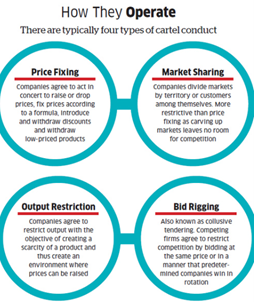
- The Competition Act 2002, defines Cartels as an association of producers, sellers, distributors, traders or service providers who, by agreement amongst themselves, limit, control or attempt to control the production, distribution, sale or price of, or, trade in goods or provision of service.
- Example: The Organization of Petroleum Exporting Countries (OPEC) is the world's largest cartel to coordinate and unify the petroleum policies.
- The Impacts of Cartelisation include:
- It increases the price of a product or service over the market price.
- It discourages new entrants into the market, acting as a barrier to entry.
- Lack of competition due to price-fixing agreements lead to a lack of innovation.
Source:
- Cartel
- An Analysis of Cartelization under Indian Competition Law
- Finance Minister Nirmala Sitharaman expresses concerns about possible cartelization in markets
Image source:
India could be an upper middle income country- LiveMint
Essence: The editorial highlights the strategy adopted by Asian nations to join the upper middle income group and paves way for India to increase its per capita income. Presently, India is a lower middle income country with per capita income of $1935 in 2020 (World Bank). IMF suggests India could reach $3769 by 2027.
However, such growth would require domestic growth and a sustainable exchange rate. Domestic economies can’t afford to have high inflation, as it would tend to depreciate the domestic currency.
Studies indicate that export led growth led South Korea, Taiwan and China to hasten their process of per capita income. The growth in world GDP assisted the process to achieve the same within 5-6 years. India could follow a similar strategy.
Why you should read this article?
- To know the strategies adopted by Asian nations to double their per capita income.
Source:
Lessons for India from Russia- The Hindu
Essence: The editorial focuses on learnings from the Russia-Ukraine war for India, which uses Russian defense supplies for its military modernization. Seeing the losses of Russian T90 tanks, a popular claim is that battle tanks have become redundant in the face of advanced anti-tank weapon systems. But the reality of battle tactics suggest that tank offense requires close support of infantry (ground combat) units, which wasn't provided by Russia. A second claim is that emerging technologies such as cyber and digital technology, AI, loiter munitions, etc. have rendered obsolete the legacy platforms such as fighter planes, warships, and artillery weapons. It is true that emerging technologies aid faster, precise and smooth conduct of war operations. But the large losses by Russian mechanized and armored vehicles, due to drone and anti-tank attacks is a result of poor tactics, and not changing warfare as these Russian systems were not supported through ground forces. Long lines of military and communication columns couldn't be reinforced and supplied, which led to their separation and annihilation. Also, not that the air power isn't effective, but Russia couldn't use it to its advantage due to Ukrainian air defense systems.
All the losses could also be related to low morale and incompetent command in the military, more than the use of technology and logistics. Valuable lessons for India is to have integrated battle groups, modern electronics and warfare systems along with legacy weapons and high morale and efficient military command and training.
Why you should read this article?
- To understand the lessons for India from Russia-Ukraine war.
- To know the myths about the changing tactics of warfare and its contradictions.
Source:
Eco Friendly Paper Ahead of Time
Background
- Founded in 1940, the Pune Handmade Paper Institute (HMPI) pioneered the production of eco-friendly handmade paper from cotton rags that can endure up to 100 years.
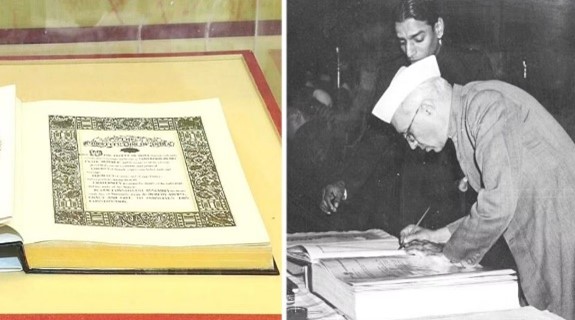
- This mill contributed to the production of the handmade paper on which the Indian Constitution was written and supplied all government ministries, including the British.
About the Eco-Friendly Paper Factory
- Handmade Paper Institute (HMPI), a modest plant in the heart of Pune's Shivajinagar district, has been producing paper without the use of wood for many years.
- The factory was built to complement Mahatma Gandhi's philosophy of introducing the ‘swadeshi' movement to India.
- The paper is made entirely of cotton rags, a by-product of the textile industry, as well as discarded unusable cotton from the pharmaceutical business.
- Because it retains the tensile qualities of cotton fibre, the handmade paper is extremely strong. It is long-lasting, chlorine-free, does not blot, and may be printed on. Furthermore, this paper has a shelf life of more than 100 years.
Quote: “India is not, as people keep calling it, an underdeveloped country, but rather, in the context of its history and cultural heritage, a highly developed one in an advanced state of decay.” – Shashi Tharoor
Source:
Share the article
Get Latest Updates on Offers, Event dates, and free Mentorship sessions.

Get in touch with our Expert Academic Counsellors 👋
FAQs
UPSC Daily Current Affairs focuses on learning current events on a daily basis. An aspirant needs to study regular and updated information about current events, news, and relevant topics that are important for UPSC aspirants. It covers national and international affairs, government policies, socio-economic issues, science and technology advancements, and more.
UPSC Daily Current Affairs provides aspirants with a concise and comprehensive overview of the latest happenings and developments across various fields. It helps aspirants stay updated with current affairs and provides them with valuable insights and analysis, which are essential for answering questions in the UPSC examinations. It enhances their knowledge, analytical skills, and ability to connect current affairs with the UPSC syllabus.
UPSC Daily Current Affairs covers a wide range of topics, including politics, economics, science and technology, environment, social issues, governance, international relations, and more. It offers news summaries, in-depth analyses, editorials, opinion pieces, and relevant study materials. It also provides practice questions and quizzes to help aspirants test their understanding of current affairs.
Edukemy's UPSC Daily Current Affairs can be accessed through:
- UPSC Daily Current Affairs can be accessed through Current Affairs tab at the top of the Main Page of Edukemy.
- Edukemy Mobile app: The Daily Current Affairs can also be access through Edukemy Mobile App.
- Social media: Follow Edukemy’s official social media accounts or pages that provide UPSC Daily Current Affairs updates, including Facebook, Twitter, or Telegram channels.




